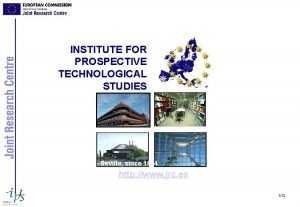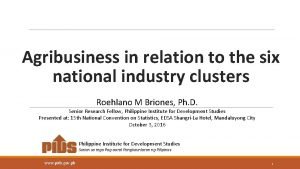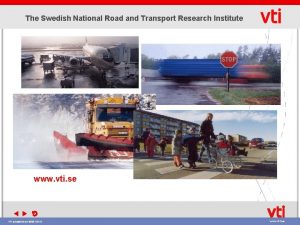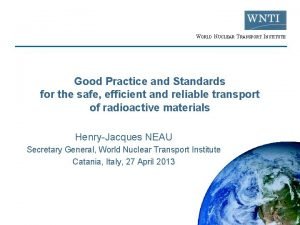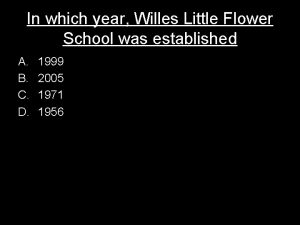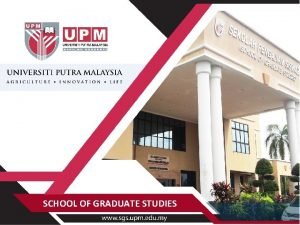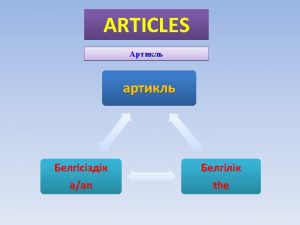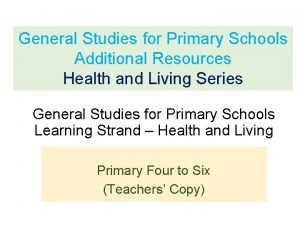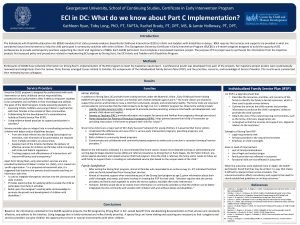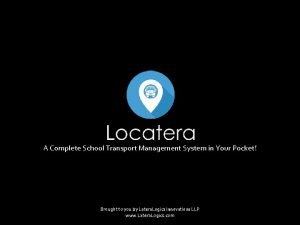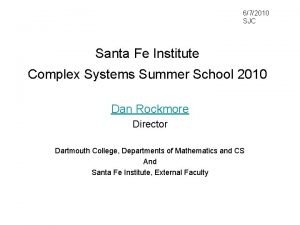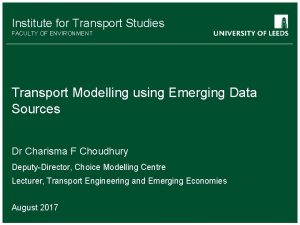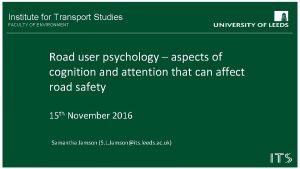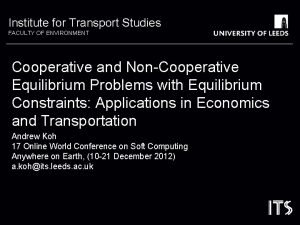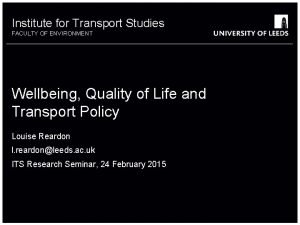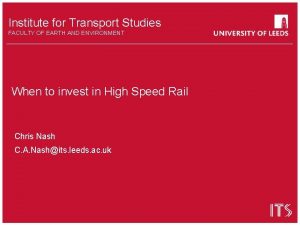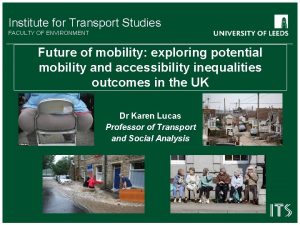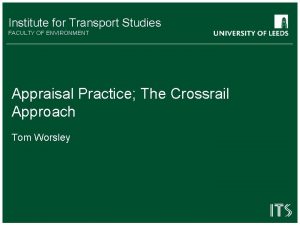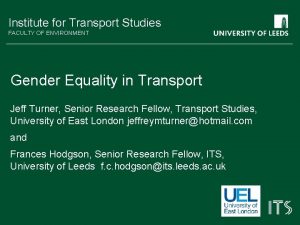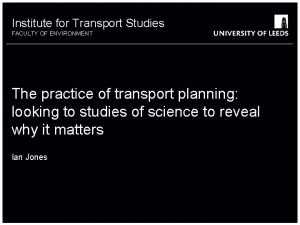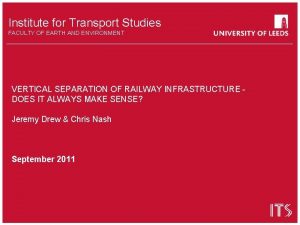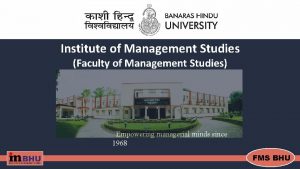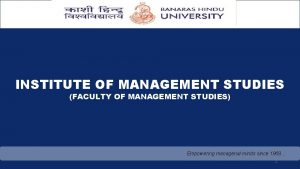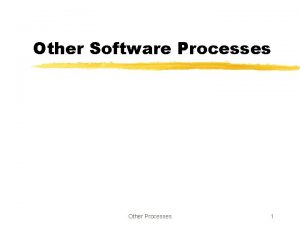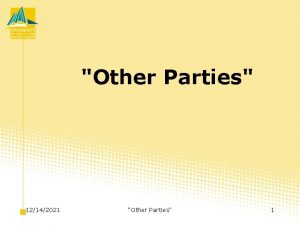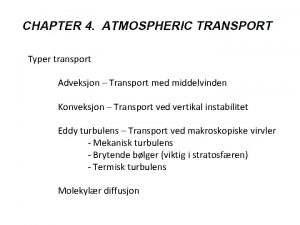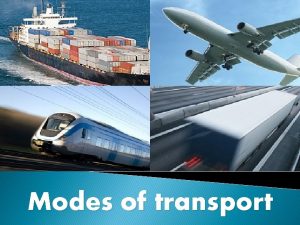School offorsomething Institute Transport Studies FACULTY OF OTHER



































- Slides: 35

School offorsomething Institute Transport Studies FACULTY OF OTHER ENVIRONMENT Pollution or congestion charging? Air quality measures and road pricing in Milan, Italy Giulio Mattioli g. mattioli@leeds. ac. uk ITS Seminar Series, 5 March 2015

Urban road pricing referenda (EU) % Yeas • Edinburgh (2005): 26% • Manchester (2008): 21% • Gothenburg (2014): 43% • Stockholm (2007): 51% • Milan (2011): 79% • more vehicles charged • increased charge • extension of charging area

Milan’s experience with charging More exceptional features: • framed in the contest of air quality concerns • introduced by right-of-the-centre city government • (local) press very supportive of charging • referendum promoted by environmental association • pollution charging turned into congestion charging • still little known internationally • OECD International Transport Forum Award 2014

Case study Reasons of interest: • challenge assumption of unacceptability of road pricing • use of air quality evidence in policy debate on charging • EC launching legal action against UK over air quality (2014) • Ultra Low Emission Zone in London • Growing interest for transport - city politics link (Walks, 2015) Approach • literature review on public acceptability of road pricing • desk research (official reports, local press articles, 2008 -2012) • quantitative analysis of electoral + census data

Structure of the presentation 1. Milan: background information 2. Pollution & congestion charging 2000 -present 3. 2011 referendum: reasons for high acceptability 4. The use of air quality measures in the policy debate

Italian metropolitan areas Source: Boffi, Colleoni & Palvarini, 2013, based on Italian Census 2001

Milan metropolitan area Source: Boffi & Palvarini, 2011, based on Italian Census 2001

Milan: transport • Italy - highest EU motorisation rate after Luxembourg: 62. 1 passenger cars / 100 inhabitants • Milan: 51. 8 cars /100 in. (EU cities median=43. 6) • car modal share: 39%; PT: 43% (trips within city proper) • “among the cities with the highest car concentration in the world” (Rotaris et al. 2010) • Illegal parking rate: 46% • Tom European Traffic Index 2013: 24 th (2011: 11 th) Inrix Traffic Scorecard 2014: 1 st (2010: 4 th)

Milan: transport Picture: Stefano Agretti

Adverse geo-climatic conditions • Po Valley: almost enclosed basin (2, 000 -4, 000 m mountain range) • Average wind speed: 0. 9 m/sec. EU cities average: 2. 5 m/sec • Temperature inversion in winter Source: Earth observatory NASA

Air quality (2012) European Environmental Agency – Air Quality in Europe – 2014 Report: • Concentrations of PM 10 PM 2. 5: high levels (in exceedance of annual target values) in the Po Valley • High values also for O 3, NO 2, Ba. P, CO

School of something Chronology FACULTY OF OTHER of events Period Mayor Events 2001 -2006 Albertini (right) Road pricing debated Ecopass (pollution charge) in the making 2006 -2008 Moratti (right) Ecopass implemented 2009 -2011 Ecopass in question 2011 Mayoral elections + referendum on extension 2012 - Pisapia (left) Area C (congestion charge) implemented Extension of charging area discussed

1999 -2008 • 1999/2002: EU Directive limit values for PM 10 (with effect from 2005) daily: 50 μg/m 3, for not more than 35 days per year; Calendar year average: 40 μg/m 3 • 2006: Edoardo Croci (Prof. Environmental Economics) Transport, Mobility and Environment Local Councillor • 2006: working group (academics / city officials) on cordon pricing • 2008: Ecopass introduced • 2009: Croci forced to resign • 2010: Milanosi. Muove initiative • 2011: Referendum on upgrade & extension

Ecopass (2008 -2011) Class Main vehicle category Char ge (€) 1 Low Emission Vehicles 0 2 Petrol Euro 3 -4, Diesel 4 with particulate filter 0 3 Petrol Euro 1 -2 2 4 Petrol Euro 0 + other diesel 5 5 Diesel cars Euro 0 + Dieseò commercial vehicles Euro 02 10 Source: ICLEI, 2013 • aims, monitoring and communication focused on pollution • deliberate “foot in the door” strategy? • ANPR technology • Mon-Fi, 7: 30 -19: 30 • Discounts for frequent users & residents • Part of package including PT improvements

Charging area • “historical city centre”, area within 16 th century city walls • small: 8. 2 km 2, 4. 5% of municipality (London: 22 km 2, Stockholm: 47 km 2) • but massive concentration of employment / population density during the day (central business district) • concentration of households with high socio-economic status in the area

Ecopass: results Vehicle access to the charging zone: • drastic drop in 2008 (-21%), then increase (but still -16. 2 by 2011) • rapid increase in the share of exempted vehicles (2007: 50%; 2008: 75%; 2010: 90%) – fleet renewal PM 10 levels: • estimated reduction of emissions produced within the area: -15% (2008) • difficult to discern effects on measures of monitoring stations • 2009: first European city to reach the threshold of 35 days; 2011: the 35 -day threshold is reached by 7 th February (worst result since 2006) • Ruprecht et al. (2008): no significant difference in PM levels between Ecopass area and outside heated public debate on ‘failure of Ecopass”

Area C (2012 -present) Pricing scheme: • Daily: 5€ • Registered resident 2 -3€ • Multiple daily tickets (30 & 60€) • Combined Area C + Garage initiative • Exempted: motorcycles and scooters, EVs & hybrid, natural gas, LPG and bi-fuel vehicles (until end 2016) • Forbidden vehicles: Euro 0 petrol, Euro 0, 1, 2, 3 diesel, >7. 5 meters • Mon, Tu, We, Fri: 7. 30 -19. 30; Thu: 7. 30 -18 • part of package with investment in modal alternatives, etc.

Area C: results (2012 -2014) • Vehicle access to CA: -28%/-31% (base: 2011) • Modal shift to PT (+4% trips in 2012 over whole city) but also motorbikes • -26% road accidents in CA • Increased speed for tramways (+4%) and buses (+7%) • Revenue (2012): 11. 2 million € (operational costs: 6. 5 million €) • Modelled reductions in emissions produced within CA: PM 10 source (10%); PM 10 tot (-18%); NH 3 (-42%); Nox (-18%); CO 2 (-35%)

2011 Referendum: reasons for high acceptability 1. Wording on the ballot-papers 2. Simultaneity with other local & national referenda 3. Vote driven by political motives 4. Small charging area 5. Framing in terms of air quality (rather than congestion)

1. Wording on the ballot-paper Comprehensive strategy - goals: . . to be financed with new congestion charge (5 -10€) • Doubling of pedestrian areas by 2012 for all vehicles + gradual • Doubling of 30 km/h areas by 2012 extension of the area to outer ring • Bike lanes network of 300 km by 2015 • Protection of all Bus lanes by 2015 • Introduction of neighbourhood bus service • Extension of bike sharing / car sharing services • Subway service during the night • Improving of taxi services Goal: -50% traffic, -50% polluting emissions

1. Simultaneity with other referenda School of something (12 -13 FACULTY OF June OTHER 2011) Referendum Local (citizen’s initiative) National (abrogative) Yeas (%) Voter turnout (%) Item-test correlation Traffic & pollution 79 49 0. 93 Public green space 96 49 0. 98 Expo 96 49 0. 98 Energy efficiency 95 49 0. 98 City canals 94 49 0. 98 Water – privatisation 92 52 0. 97 Water – tariffs 93 52 0. 97 Nuclear 92 52 0. 97 Legitimate impediment 94 52 0. 97

3. Referendum results Congestion Charing: % of Yeas (on valid votes) Source: own elaboration on electoral data

3. Referendum results Congestion Charing: % of Yeas (on registered electors) Source: own elaboration on electoral data

3. Referendum results Source: own elaboration on electoral data + census data

3. Referendum results Source: own elaboration on electoral data + census data

4. Small charging area • Current area: 8 km 2, 4. 5% of municipality (still in 2015) • But referendum demand extension to larger road ring area: 29 km 2, 15. 7% of municipality

Use of air quality evidence Ecopass (2008 -2011) Supporters: • Health impacts emphasised/exaggerated • Scheme presented as a work in progress (or a foot in the door? ) • Both high and low PM levels are used to support upgrade/extension Opponents: • Ecopass as a failed experiment (because of high PM) • But proposed alternatives are even more radical: close to traffic entirely (at least part of) the city centre; traffic restrictions based on alternate number plates day (during periods of “environmental emergency”) • Need for some form of traffic restriction not questioned

Use of air quality evidence Area C(2012 -present) Supporters: • Attempt to decouple ‘congestion’ charging from pollution. New goals: traffic reduction, quality of urban environment • still seizing every available piece of evidence to suggest impact on air pollution / health risk reduction • Launched Black Carbon (BC) monitoring project (2012) Opponents: • Remind high levels of PM / breach of EU limits • Question the legitimacy of BC as an indicator of health risk • Accuse city government of making instrumental use evidence / push forward hidden “anti-car” agenda • Failed to gather enough signatures for a referendum

Black Carbon WHO (2012): • better indicator of harmful particulate substances from combustion sources (especially traffic) than PM (at least for short-term health effects) • within-city variability is greater than for PM mass, particularly in relation to traffic • health effects of traffic limitation policies may be seriously underestimated when based on effects estimates for PM 2. 5 or PM 10 • Climate forcing agent

Black Carbon Invernizzi et al. (2011): “Traffic restrictions are an unpopular tool to mitigate urban air pollution, and a measurable improvement in air quality is needed to demonstrate the effectiveness of this measure. Previous attempts failed to detect measurable reductions of PM mass pollution within the areas subject to traffic restriction. However, black carbon, which is emitted primarily by traffic sources, could be a PM metric more suitable to demonstrate pollutant reductions” BC monitoring report (2012): • -28/-40% BC in the charging area (as compared to outside) • -75%/-78% on ‘carfree sundays’ (as compared to normal Sunday) • no significant within-city variation in PM • strong correlation between traffic levels and BC

Latest developments Municipality - Sustainable Urban Mobility Plan (2015) • extension of charging area postponed: double cordon-pricing (2. 5€ each) “to be implemented in the long term” (2022? ) • Back to pollution charging? Low Emission Zone Milanosi. Muove • promoting online petition for extension of charging area and reduction of exemptions / discounts EU • introducing BC as additional measure? • …or scrapping air quality directive completely?

Milan LEZ • among the projects of the new Sustainable Urban Mobility plan • ANPR-based (100 gates) • 136 km 2 – 75% of municipality • access rules to be defined

Conclusions: Public and political acceptability • EU air quality directives opened a “window of opportunity” for political entrepreneurs aiming to limit car use in Milan • Framing of pricing debate in terms of air quality / health undermines legitimacy of outright opposition • The terrain of conflict is often the use of air quality evidence • All actors: opportunistic use of evidence. Use air quality measures that conform to their agenda • Referendum results can be strongly influenced by wider political dynamics, especially when paired with other elections (cfr. Gothenburg)

Links (in English) • www. comune. milano. it/areac • Mattioli G; Boffi M; Colleoni M (2012) Milan’s pollution charge: sustainable transport and the politics of evidence (online conference paper) • ICLEI, 2013, “The Ecopass pollution charge and Area C congestion charge, comparing experiences with cordon pricing over time”

School offorsomething Institute Transport Studies FACULTY OF OTHER ENVIRONMENT Thank you for your attention Giulio Mattioli g. mattioli@leeds. ac. uk
 University of split faculty of maritime studies
University of split faculty of maritime studies Paradigm shift from women studies to gender studies
Paradigm shift from women studies to gender studies Uniport symport antiport
Uniport symport antiport Primary active transport and secondary active transport
Primary active transport and secondary active transport Now answer the questions
Now answer the questions Active vs passive transport venn diagram
Active vs passive transport venn diagram Unlike passive transport active transport requires
Unlike passive transport active transport requires Primary active transport vs secondary active transport
Primary active transport vs secondary active transport Bioflix activity membrane transport active transport
Bioflix activity membrane transport active transport Active transport diagram
Active transport diagram Selectively permeable definition biology
Selectively permeable definition biology Institute for prospective technological studies
Institute for prospective technological studies Mangooutlook
Mangooutlook Swedish national road and transport research institute
Swedish national road and transport research institute World nuclear transport institute
World nuclear transport institute Hahnville high school powerschool
Hahnville high school powerschool Willes little flower school
Willes little flower school Coumadin clinic emory
Coumadin clinic emory Types of position
Types of position Dean sgs upm
Dean sgs upm Shetland school of nautical studies
Shetland school of nautical studies Robbinsville high school program of studies
Robbinsville high school program of studies Robbinsville high school program of studies
Robbinsville high school program of studies Interpersonal studies
Interpersonal studies He studies grade
He studies grade General studies for primary school
General studies for primary school Radnor high school naviance
Radnor high school naviance Ajou university gsis
Ajou university gsis Georgetown school of continuing studies reputation
Georgetown school of continuing studies reputation Mindful coach radnor
Mindful coach radnor Jane jacobs columbia university school of general studies
Jane jacobs columbia university school of general studies Hamilton lugar school of global and international studies
Hamilton lugar school of global and international studies Pilot school management system
Pilot school management system Charter school institute
Charter school institute Santa fe institute summer school
Santa fe institute summer school Article 4 the teacher and the profession explanation
Article 4 the teacher and the profession explanation











